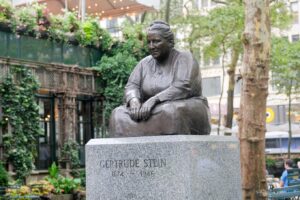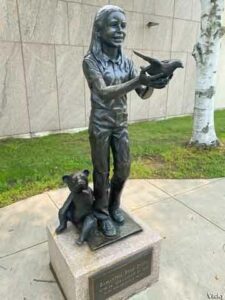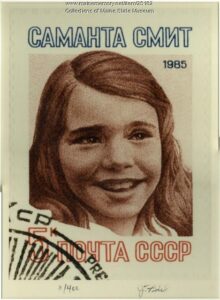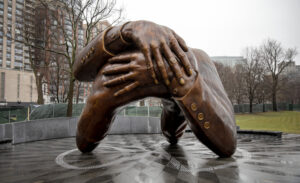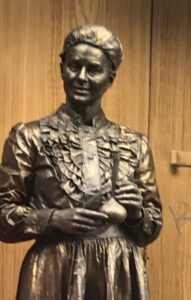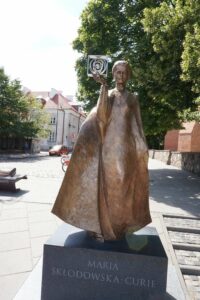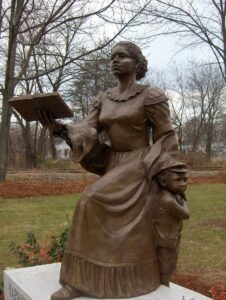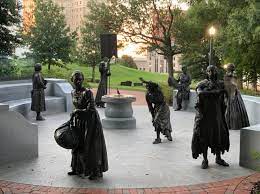
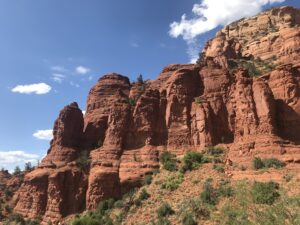
SEDONA: RED ROCK MONUMENTS
“Carve out a place for yourself. Aspire to new plateaus.” llan Shamir
If you’ve been reading this site for a while you’ll know I’ve stayed close to my original premise, which has been to honor statues of women and raise awareness to the paucity of monuments delegated to the matriarchy. But this month’s entry, I deviate and include other-worldly monuments found in nature, particularly those red rock spires or buttes found in Sedona, Arizona.
On a recent trip with my husband to visit our niece in Arizona I became bewitched by the beautiful red rock formations that adorned Sedona. I’m not naïve to nature’s wonders, I’ve already experienced the beauty of the Grand Canyon and Niagara Falls, but they still didn’t prepare me for the intensity of enchantment I felt for Sedona and the stronghold it clamped upon my psyche. Simply put, I became entranced by the vortex, or spiraling energy that wheels and turns throughout the region, often eliciting a meditative aura and metaphysical state of euphoria. Before you roll your eyes, hear me out. Listen while I convince you why the red rock monuments at Sedona, or at least Cathedral Rock, should be included in my litany of monuments dedicated to the wonderfulness of women.
Sedona, with its red rock vistas and vortex of spiritual energy, is often called “a museum without walls.” It’s easy to see why. The views are not only spectacular, the vivid colors are so striking they shine with luminosity, as if the gods had kept the best hues for themselves. Sedona, formed by the fracturing of the western edge of the Colorado plateau, is said to contain 4 distinct vortexes that channel an inflow and outflow of masculine and feminine energy. The first vortex we visited was the Sedona Airport, high atop a hill, where the electrical charge is said to strengthen masculine energy. The views were so amazing I wanted to proclaim myself King of the Hill, but none of us tingled or buzzed with newfound energy. Bell Rock, the second vortex we stopped at, proposes to enhance aspects of femininity and masculinity while prompting these opposing parts of the self into a more harmonious and balanced state. It’s a gorgeous formation carved to look like a bell and while we were bedazzled by the monument, none of us felt the earth move, pivot or rotate. Yet. After we left, I couldn’t help but marvel at the deep carvings, supposedly formed during an inhospitable time on earth. To be honest, Sedona’s entire vista looked as if the red rock formations were strategically placed or created by a higher power. PHEW! A few hours in Sedona and I’m envisioning a scenario that only one versed in New Age teachings, tarot cards or palm readings could fathom. Much to my surprise, Bell Rock had found a way to calm my inner turmoil with its sereneness and innate optimism.
On a crunch for time, we skipped Boynton Canyon. Instead, we headed to Cathedral Rock, where we found the best view in the whole region. Once atop a steep rocky mountain outcrop where dozens of other red rock formations came into the forefront, we were treated to a 360-degree panoramic landscape. My husband, who suffers from vertigo, felt dizzy at the summit. My experience differed, possibly because Cathedral Rock is said to aid feminine aspects of the divine. Where my husband experienced nausea, I felt the whirl of the vortex spinning through me like a hypnotic tsunami. It was similar to the sensation you get when jumping on a trampoline, right before you plummet, when you’re still suspended in midair: light, buoyant and boundless. Helen Ready’s powerful lyrics, “I am Woman. Hear me Roar” soared through me. I reigned supreme.
Did I experience an epiphany atop Cathedral Rock? Did the vortex infiltrate my inner sanctum?
While my time at Sedona didn’t yield any long-lasting psychic healings, chakra alignments, karmic cleanings and I didn’t find my divine purpose, I still got caught up in an emotional blizzard of cosmic energy. There’s no denying that Sedona fills you with an undeniable magical essence. It’s as if the rock formations were created for the sole purpose of bringing beauty, spiritualty and enchantment to our world.
I think the reason I felt the spark at Cathedral Rock was because I believe in the power of monuments, whether manmade or natural. All statues, carved or chiseled, are tributes to the Spectacular. They’re an homage to the Ones who are a cut above the rest, whether they sit on a pedestal or a rock; they dot the landscape with physical reminders that the world is luminous and the people in it are equally monumental.
Rock on, my friends and readers!
